
Image source: The Motley Fool.
Care.com Inc (NYSE:CRCM)Q4 2018 Earnings Conference CallMarch 07, 2019, 8:00 a.m. ET
Contents: Prepared Remarks Questions and Answers Call Participants Prepared Remarks:
Operator
Greetings, and welcome to Care.com's Fourth Quarter and Full Year 2018 Conference Call. At this time, all participants are in a listen-only mode. A question-and-answer session will follow the formal presentation. (Operator Instructions) As a reminder, this conference is being recorded.
It is now my pleasure to turn the call over to, Mike Goss, Vice President of Finance for Care.com. Please go ahead, Mike.
Mike Goss -- Vice President of Finance
Thank you. Good morning, and welcome to Care.com's financial results call for the fourth quarter and full year ended December 29, 2018.
During the course of this conference call, we will discuss our business outlook and make other forward-looking statements within the meaning of the safe harbor provisions of the Private Securities Litigation Reform Act of 1995. These may include, among other things, projected financial results or operating metrics, anticipated business and marketing investments, as well as strategies and expected results of those investments and strategies, anticipated future products or services, anticipated market demand or opportunities for our products and services and other forward-looking topics.
Such statements are only predictions based on Management's current expectations. Actual results or events could differ materially from those predictions due to a number of risks and uncertainties, including those set forth in the press release we issued today, as well as those more fully described in our filings with the Securities and Exchange Commission.
In addition, any forward-looking statements represent our views only as of today and should not be relied upon as representing our views as of any subsequent date. While we may elect to update these forward-looking statements at some point in the future, we specifically disclaim any obligation to do so, even if our views change except as required by law. Therefore, you should not rely on these forward-looking statements, as representing our views, as of any date subsequent to today.
We will also be referring to non-GAAP measures on this call, including adjusted EBITDA, which we refer to as EBITDA throughout this presentation. This measure represents pre-tax net income from continuing operations which excludes the accretion of preferred stock dividends and issuance costs, as well as federal and state franchise taxes and other income expense net, depreciation and amortization, stock-based compensation, accretion of contingent consideration, merger and acquisition related costs and other unusual or non-significant adjustments such as impairment or restructuring charges.
We also refer to non-GAAP EPS, which excludes the accretion of preferred stock dividends, plus stock based compensation, accretion of contingent consideration, merger and acquisition related costs and other unusual or non-significant cap (ph) adjustments such as impairment, restructuring charges and the release of valuation allowance for deferred taxes due to projections of taxable income. These non-GAAP measures are not prepared in accordance with generally accepted accounting principles. Reconciliations to the most directly comparable GAAP financial measures are provided in the tables in the press release issued today, which is available on our IR website.
We will also be referring to profitability on this call. When we refer to profitability, we're referring to it on an adjusted EBITDA basis, unless otherwise noted.
Today's call is available via webcast and a telephone replay and will be available for one week following the conclusion of this call. To access the press release, supplemental and financial information or the webcast replay, please consult our IR website.
With that, let me turn the call over to Sheila Lirio Marcelo, Founder, Chairwoman and CEO of Care.com.
Sheila Lirio Marcelo -- Founder, Chairwoman & Chief Executive Officer
Thank you, Mike. Good morning, and thank you to everyone for joining us. We're very pleased with our strong finish to 2018. In the fourth quarter, our growth accelerated to 13% driven by accelerating momentum in our US Consumer business and Care@Work.
In US Consumer, product improvements in our mobile and desktop experiences drove improving conversion, which is leading to accelerating growth in end of period members and revenue. In Care@Work signature wins of larger clients like Starbucks and Best Buy, as announced in the press, fueled growth. We were able to generate solid leverage across our scalable business model and convert our net sales growth to meaningful EBITDA and cash generation.
As we start 2019, we are excited to continue growing both US Consumer and Care@Work with a goal of penetrating ever more of the $336 billion spent annually on care predominantly on child care and senior care. With our leading consumer and enterprise platforms that provide mass-market solutions for people at all income levels, we believe we play a critical role in building a scalable care infrastructure to address the future of work for both families and caregivers. We remain confident that the building blocks that we put in place in 2018 will enable us to accelerate growth in 2019.
In 2018, we continue to grow our business profitably, increasing the top line by 10% to $192.3 million, while delivering $32.2 million in EBITDA and expanding EBITDA margin by 340 basis points to 16.8%. This profitable growth was driven by strength in our US Consumer business and Care@Work, coupled with gains in operating leverage, particularly in sales and marketing. The ROI in our US Consumer business improved to 6.4x in 2018 from 4.7x in 2017. These efficiency gains and the overall profitability in our business flowed through to continued healthy cash generation. We added $25.8 million in cash and short-term investments in 2018, finishing the year with $127.5 million on our balance sheet.
I'll now briefly recap our progress in each business in 2018, and our strategic priorities for 2019. Starting with US matching, we saw end of period paying family growth of 12% for 2018 versus 2017. We achieved this growth, while improving our unit economics, driven by efficiency gains in our costs to acquire new members. While we did see a slight decline in average revenue per user or ARPU, which we anticipated based on the mix shift toward longer duration subscription, this was as expected more than offset by growth in length of paid time.
Moving on to total company sales and marketing, which as a percent of revenue was 31.5% for 2018, a 7 percentage point improvement versus 2017. Our continued leverage in sales and marketing was driven by decreasing US Consumer CAC through a combination of product investments, including ongoing mobile and unpaid channel optimization and overall paid marketing efficiency gain. CAC declined 25% from $97 in 2017 to $73 in 2018.
This CAC improvement and the related notable increase in ROI that I described earlier give us the flexibility to spend incrementally on sales and marketing in 2019, and to do so effectively on the back of the efficiency and conversion gains we've achieved. This incremental spending in 2019 will follow a few years in which sales and marketing spend came down versus prior, as we focused on reducing direct marketing spend, while improving mobile conversion and organic growth. And in the context of improving unit economics, we believe that our planned investments in direct marketing spend in 2019 will help us make progress relative to our long-term goals on both the top and bottom line. Michael will share his regular unit economics deep-dive shortly, and then he will provide guidance in the context of these planned investments.
The improvements in our unit economics are directly related to our continued progress with Care 3.0 which we kicked off in 2017. This includes continued optimization of our enrollment flows, improvements in our organic initiatives, namely in search engine optimization and our ongoing investments in content and our community experience, and driving more of our web users to download our mobile app now at 4.6 stars in the iOS store.
Our mobile app users have been matching faster and more often, and have shown to be more likely to reupgrade down the road, driving the future length of paid time. We've also introduced a separate provider app with meaningful increases in installs. After a multi-year investments in mobile transformation and now with a stronger foundation in our improved consumer platforms, all combined with our leading brand, we expect to drive further growth in our end of period members and thus US Consumer revenue by integrating recent child care product tuck-in acquisitions and investing more in our fastest growing vertical senior care.
Starting with our tuck-in acquisitions in child care. We believe combining our leading position in child care with a focus on offering higher frequency care solutions such as on-demand babysitting and after school activities will not only improve our conversion rates, but also expand our length of paid time flowing through to end of period member growth.
A quick note on after school, one of the largest segments within child care. In 2018, we acquired Galore now called Care.com Explore to help families find valuable after school activities for their children's academic and social development. With the integration of Care.com Explore, our goal is to help make it easier for families to find and schedule local activities, as a way of addressing daily needs beyond hiring nannies and babysitters. As the next step, we are pleased to announce another tuck-in acquisition that we believe will help us achieve our vision for a holistic after school offering, Figure8.
Through a mobile app designed to facilitate the management of the many moving parts in kids after school schedules, Figure8 makes communication and coordination easier with relatives, other families and caregivers. And we're excited to have the talented Figure8 team join the Care.com family. With a strong global foundation in our core US Consumer matching offering, we are excited to integrate these higher frequency care solutions to help further drive end of period member growth and US Consumer revenue.
Now moving on to senior care. The market for senior care is growing fast given positive demographic trends. According to AARP, 10,000 boomers a date turn 65. This trend is expected to continue into the 2030s. We believe we can efficiently drive both engagement and growth in this vertical. We see significant opportunity in senior care, in particular given the early marketing investments and product enhancements we made in 2017 and 2018.
Building on a more verticalized mobile enrollment flow and our learnings from our senior care specific test spending, we intend to continue our investment in senior care growth in 2019. Our unit economic improvements that I mentioned earlier are comparable between child care and senior care. These results give us confidence that our senior care investments can contribute to further end of period member growth. In summary, with our stronger US matching platform, improving unit economics and leading brand, we believe we are positioned well to drive further acceleration in US Consumer revenue growth acceleration in 2019.
Moving now to our Care@Work business, which continues to scale with 2018 revenue growth versus prior of 34%. And our innovative care work experience and exceptional service delivery are driving our high revenue renewal rate of 100% plus, we are pleased with this performance. Similar to our US Consumer matching business, our focus with Care@Work has been on expanding our reach to serve more families, especially those on the front line with ever shifting work schedules that make balancing work and care challenging. A recent study by Harvard Business School on The Caring Company found that employees across industries are expressing their growing need for care benefit, and that companies that help with their employees care needs can gain a competitive advantage. We are excited to continue to help companies' gain that advantage.
Our new clients that have large diverse employee pool such as Starbucks and Best Buy are an important part of our inclusive approach to meeting growing care needs by building out a care infrastructure to serve the mass market. We are pleased to announce the addition in Q4 of Meijer, one of the largest grocery chains in the Midwest with nearly 70,000 employees. The Meijer team noted to us that Care@Work aligns with one of their core values family. In Q4, we also added other new clients, including Western Union, Rosetta Stone (inaudible) Heidrick & Struggles and Cushman & Wakefield. And we had renewals from a range of industries including clients like AACOM, NVIDIA, West Virginia University, Pillsbury Winthrop and Houston Methodist. We are excited both about the overall momentum in our Care@Work business and about having innovative companies like these alongside us in our mission to help all families.
We're also planning strategic investments in 2019 to build on this momentum and drive further growth in Care@Work. For example, we will be making investments in both our direct sales team and in other channels to expand our reach. We are also planning improvements to the user interface, infrastructure investments and tested innovative offerings around affordable care solutions that are especially important for our largest new customers. We believe Care@Work have meaningful growth potential, and we expect that it will remain the fastest growing piece of our overall business in 2019.
As we scale both the B2B and B2C parts of our business, we are focused on operational excellence to ensure, we deliver an exceptional member and client experiences, investing in member care, safety and cyber security and overall service delivery enables us to continue to build trust in our leading brand. Across our consumer and enterprise services, we maintain best-in-class net promoter scores that contribute to growth.
In summary, we are continuing to deliver on our mission for our millions of families and caregivers, while driving consistent profitable growth. 2018 was a successful year for us, where we saw revenue growth acceleration in Q4 driven by US Consumer and Care@Work, and we expect to see continued top line momentum in 2019.
Before I turn the call over to Michael, I want to note that Laela Sturdy is stepping down from our Board this spring after three years of service. I want to thank her, for her many significant contribution and wish her well.
Now, I'll turn the call over to Michael before we open it up to questions.
Michael Echenberg -- Chief Financial Officer
Thank you, Sheila. First, I'll provide more color on our fourth quarter and full year 2018 results; and then, I'll share our outlook for the full year and first quarter of 2019.
I'll start with full year revenue, which grew 10% versus prior from $174.1 million in 2017, to $192.3 million in 2018 within our guidance range. Q4 revenue grew 13% from $44.2 million in Q4 of 2017 to $49.8 million in Q4 of 2018. This 13% represents acceleration relative to the 10.5% growth, we saw for Q3, '18 versus Q3, '17 and the 9% growth we saw for the first half of 2018 versus the first half of 2017.
Digging in by business now, on revenue growth. Our US Consumer business saw accelerating growth versus prior across the year, growing 5% in Q1, 7% in Q2, 9% in Q3, and 11% in Q4. For the full year, US Consumer grew 8% to $148.8 million. Our other businesses, which include International, Care@Work and Marketplace grew 20% versus prior to $43.5 million for the year. Within that Care@Work continued as a source of strength.
For 2018, Care@Work grew 34% versus 2017 to $18 million and for Q4, it grew 48% versus prior to $5.6 million. Given the high rate of growth and the impact that a single big deal can have, we expect to continue to see some flux in the delta versus prior from one quarter to the next. In keeping with our normal cadence, I'll now provide a deeper dive on unit economics for the US Consumer business, focusing on full year 2018 versus 2017.
Overall, the ROI improved 36% from 4.7x for full year 2017 to 6.4x for full year 2018. This was driven by a number of factors. Length of Paid Time or LOPT increased 6% from 14 months in 2017 to 14.8 months in 2018. As a reminder, at the start of each year, we typically take the opportunity to expand the observation window, to give better visibility to the long tail.
This is one benefit of our Care 3.0 focus on driving long-term improvements in member engagement, through our product investments and a mix shift toward longer duration subscription packages. We have also seen better rollover attention earlier tenure levels. As we've described the mix shift led to a natural decline in ARPU given that longer duration packages offered lower monthly prices. From 2017 to 2018, ARPU fell 2.4% from $39.86 to $38.89. While this was a partial offset, the increase in LOPT drove a 3.4% increase in LTV from $461 in 2017 to $471 in 2018.
Cost per acquired customer decreased 25% from $97 in 2017 to $73 in 2018. This was the result of activities that Sheila referenced earlier, specifically continued progress with paid marketing optimization, product investment to drive conversion improvements and content and community improvements to drive unpaid acquisition. As a reminder, you can find additional detail, including the breakout between matching and payments, in our earnings results supplement, which we posted to the IR website this morning.
Now on to EBITDA , which was ahead of our expectations. We remain committed to driving shareholder value through profitable growth, with Q4 marking our 13th consecutive quarter of growing profitably. For Q4, EBITDA was $12.7 million for a margin of 26% compared to $11.4 million and 26% margin in Q4 of 2017. As a reminder, last quarter, we noted that we decided to make certain investments originally intended for Q3 and Q4 instead, to support key activities in the run-up to 2019. For the year, EBITDA was $32.2 million for a margin of 16.8% compared to $23.3 million for a 13.4% margin in 2017, representing a margin improvement versus prior of 340 basis points.
For 2018, net income attributable to common stockholders was $43.2 million, as compared to $6.9 million in 2017. For the fourth quarter, net income attributable to common stockholders was $41.3 million, as compared to $6.3 million in Q4 of 2017. Included in our GAAP net income was a one-time income tax benefit of approximately $45 million resulting from the reversal of the Company's valuation allowance against deferred tax assets, which had a flow through impact to EPS.
Now, moving onto the cost lines. Starting with gross margin, which was 78% for full year 2018, compared with 79% for 2017. As a reminder, Care@Work is our fastest growing business and it has a lower gross margin than the consumer business.
On to sales and marketing, we reduced sales and marketing by 7 percentage points, as a percent of revenue from 38% in 2017% to 31% in 2018. In 2018, R&D increased year-over-year, as a percent of revenue by 3 percentage points from 15% to 18%, as we continue to invest in innovation on both the B2C and B2B sides of the business. G&A, as a percent of revenue for 2018 was 23%, as compared to 20% last year. A key driver here was an evolution in our stock-based comp program. As I've discussed before, as we cycle past this, I do not expect stock-based comp to grow in 2019 at the rates we saw in 2018.
Moving now to EPS. For the year, GAAP EPS from continuing operations on a diluted basis was $1.29, up from $0.22 in 2017. For the quarter, GAAP EPS was $1.23 compared to $0.19 in the fourth quarter of 2017. As I mentioned in the context of net income, this includes the one-time benefit associated with the release of our valuation allowance.
Non-GAAP EPS for the year was $0.77, as compared to $0.69 in 2017. This improvement versus prior year was mainly the result of flow through from the EBITDA improvement versus prior, partially offset by cycling against the one-time benefit in 2017 associated with tax reform, that cycling effect was especially pronounced in Q4. Non-GAAP EPS in Q4 2018 was $0.26 cycling against $0.32 in Q4, 2017.
Regarding cash and short-term investments, we ended the year with a balance of $127.5 million, up $25.8 million from the end of 2017, and this includes the offset from about $10 million of cash that we spent on acquisitions in 2018.
Now, turning to guidance. I'll start with revenue. For full year revenue, we are guiding to $217 million to $221 million, up approximately 14% versus prior -- prior at the midpoint. This represents about 4 percentage points of acceleration relative to the 10% growth versus prior we saw in 2018. Given the cadence of our investments and the year-ago comps, we expect the revenue growth rate in 2019 to increase across the year beginning with 11% in Q1. We are guiding to Q1 revenue of $52.5 million to $52.8 million.
On EBITDA, we are guiding to $33 million to $35 million for the full year, yielding EBITDA margin of about 16% to the middle of the range. As we've described before, the efficiency of our model and the compelling unit economics, give us the flexibility to invest incrementally to drive long-term growth, while maintaining healthy margins.
As Sheila mentioned, the key areas of incremental investment in 2019 are as follows: one, expansion of our child care offerings through the integration of our tuck-ins; two, senior care market in which we expect to drive revenue efficiently with much of that revenue coming after 2019; three, Care@Work in support of continued healthy growth fueled by new clients and renewals; and four, operational excellence initiatives. These investments resulted in lower flow through from incremental revenue to incremental EBITDA for 2019 versus 2018, than we saw in 2018 versus 2017, which is consistent with how we frame the possible pathways from negative margins back in 2015 to our long-term EBIT target margin range, specifically that it wouldn't necessarily be a straight line.
We remain comfortable with the expectation we have shared that we will get to that range on the back of revenue growth with incremental revenue flowing through more significantly to incremental EBITDA, and that the expected return on the investments we're making now will help us to achieve that. The planned cadence of these investments drives the shape of the year on the EBITDA line. While we are guiding to roughly 16% EBITDA margin for the full year, we're expecting roughly 7% in Q1. Our Q1 guidance range is $3.7 million to $4 million.
For full year, non-GAAP EPS, we're guiding to $0.73 to $0.78. This is based on an expectation of about 41 million weighted average diluted shares outstanding. For the first quarter, we're guiding to non-GAAP EPS of approximately $0.08 with an expectation of roughly 40 million weighted average diluted shares outstanding. Finally, we expect to end 2019 with about $145 million in cash and short-term investments, driven primarily by EBITDA flow through and partially offset by outflows related to the Figure8 acquisition and earn outs from earlier acquisitions.
In 2018, we drove further profitable growth, while positioning ourselves for acceleration in 2019. We remain focused on key strategic initiatives on both the B2C and B2B sides of the business with the goal of providing a wide range of high quality care options for families and penetrating ever more of our large total addressable market.
With that, I'll open the call to your questions. Operator?
Questions and Answers:
Operator
Thank you. We will now be conducting a question-and-answer session. (Operator Instructions) Our first question today is coming from Jason Kreyer from Craig-Hallum. Your line is now live.
Jason Kreyer -- Craig-Hallum -- Analyst
Good morning. Thank you for taking my questions. Just wanted to start on Explore. So maybe you can give us just some insight into the progress of the integration there, the expected timeframe for the roll out of Explore. And then when you go to market with that product is this embedded within the subscription or you use (ph) this as more of a lead generator for customer acquisition and kind of what the goal of that driving better conversion down the road?
Sheila Lirio Marcelo -- Founder, Chairwoman & Chief Executive Officer
Sure, Jason. Yeah, we're super excited about Galore now called Care.com Explore, and we're actually integrating that with the coordination and communication tools with Figure8 that we're just announcing today. Our intent really is to integrate that as part of subscription overall and at the same time, also as potential lead generation because I think we can offer different versions of the products and feature sets, and so we're excited to do that. We're continuing to really sign up a bunch of different activity platforms and integrating them to use the SaaS tool of Care.com Explore and so we'll be announcing those soon, and with that continues to be an exciting investment opportunity.
Jason Kreyer -- Craig-Hallum -- Analyst
Okay. And then just one follow-up. The -- in Q4, we saw a more substantial pullback in direct marketing spend than we've seen in past quarters. Just wondering if you can chime (ph) in a little bit of a light on that, is that just based on seasonality? Is that driven by more efficiency in different channels like, any color would be great?
Michael Echenberg -- Chief Financial Officer
Yeah. Thanks, Jason. I'd say that with respect to sales and marketing, I think setting aside any fluctuations from one quarter to the next, the main focus today is around -- as we look ahead to 2019, the expectation that we'll be turning the dial back up on sales and marketing as we've described feeling good that on the back of the efficiency gains and the conversion improvements we can do that with an expected -- an expectation of efficiency. And in particular, we're looking forward to continuing to build on the momentum, we're seeing in senior care. And so as a general matter, Q4 was a little different from Q3 with respect to the delta versus prior. But the general story that we saw in 2018 remain consistent, which was continuing to optimize for efficiency. And then in 2019, as we talk about acceleration that sales and marketing line will go back a bit in the other direction.
Jason Kreyer -- Craig-Hallum -- Analyst
Got it. Thank you.
Operator
Thank you. Our next question today is coming from Marvin Fong from BTIG. Your line is now live.
Marvin Fong -- BTIG -- Analyst
Hi, thanks for taking my question. Just thought I'd start with Care@Work and the new clients that you've onboarded recently the front -- the ones with lots of frontline employees. Have you noticed anything different about these -- your experience with these employees in terms of their uptake of the product as compared to some of your past covered families given there is a little bit different type of employee set?
Sheila Lirio Marcelo -- Founder, Chairwoman & Chief Executive Officer
What's interesting is because we are the leading brand and platform on the consumer side for care, our ability to actually service across the country given the ubiquity of the service is allowing us to really leverage our B2C platform to service B2B and that was always the vision and the design since founding. So we continue to be excited. And the focus of consumer to be mass market allows us to really lend itself for the product on the B2B side.
Marvin Fong -- BTIG -- Analyst
Okay, great. Thank you. And just one follow-up, just on senior care. Can you give us any broader picture about how much faster it's growing than say the child care business. And just sort of any opportunity to expand the product set there or it's something more to drive the adoption of in-home senior care? Thanks.
Sheila Lirio Marcelo -- Founder, Chairwoman & Chief Executive Officer
Yeah. We haven't -- we haven't actually broken it out other than in our prepared remarks that Michael and I shared that. It is growing fast -- it is the fastest growing vertical. And as of '17, '18, we started verticalizing enrollment and the overall experience and that we timed with the test spending on senior care ads (ph) across our different acquisition channels, and we saw real productive unit economics and CAC that was comparable to child care. So we continue to be excited. Michael just answered another question around, our investing more there because the test spending, plus investments we've made in the product, we really feel is sort of a strong indicator to continue to invest given the strength of the unit economics of this vertical.
Michael Echenberg -- Chief Financial Officer
The only thing I might add to that is to say that while we expect to drive incremental sign ups through this vertical, we also like what we see with respect to families and caregivers already on the platform, who might have joined us for child care moving into this vertical as well. It fits nicely with the original brand thesis that if we build the trust based relationship with mom with respect to one set of care needs, she will come to trust us more broadly for her other care needs too.
Sheila Lirio Marcelo -- Founder, Chairwoman & Chief Executive Officer
And it's the demographic trends with regards to the sandwich generation, where I believe half of 40-year-old to 50-year-old are -- or between 40-year-old and 60-year-olds are already sandwiched between child care and senior care and trying to find in-home solutions, there is a natural overlap between the child care and senior care offering that we have.
Marvin Fong -- BTIG -- Analyst
Great. Thank you. If I could just sneak one more in. On Care.com Explore, I understand what you're saying about integrating it with the subscription model. Is there any revenue stream that you collect from the service provider? Or is it just going to be just integrate with the subscription and that will be the main source of revenue? Thanks.
Sheila Lirio Marcelo -- Founder, Chairwoman & Chief Executive Officer
Yes, there is a revenue stream from the different service providers. So there will be an SMB portion of the business, as well as consumer revenue from the after school.
Marvin Fong -- BTIG -- Analyst
Okay. Thank you. Sorry. Thank you very much. Appreciate it.
Operator
(Operator Instructions) Our next question is coming from Dillon Heslin from ROTH Capital Partners. Your line is now live.
Dillon Heslin -- ROTH Capital Partners -- Analyst
Hi, thanks for taking my questions. Quickly on some of the senior marketing initiatives, could you talk about how senior care marketing might differ from some of the child care efforts you've taken in the past, and are you primarily more focused on targeting your current members or a mix of current and new members? And then as a follow-up, are you able to sort of quantify the LOPT impact that's obviously gone up, how it could have been impacted by the acquisitions, so sort of like an organic number versus the incremental impacts from -- from the two acquisitions you made? Thank you.
Sheila Lirio Marcelo -- Founder, Chairwoman & Chief Executive Officer
Sure. Let me start with senior care and I'll turn the LOPT over to Michael, Dillon. So on the senior care side, in terms of overall marketing channels, we're actually targeting as Michael pointed out both our existing members because there is a natural overlap. Now that we're 12-years-old and also the brand vision has always been around child care and senior care, there is a natural, I think uptake that we're seeing with regards to senior care vertical, but as well as new because of the phenomena of families starting to struggle with this child care and senior care being sandwich. So I think the opportunities for us continue to be both and that they're exciting, and it's starting to show in the numbers, as I've indicated in our prepared remarks. I'm turning it over to LOPT.
Michael Echenberg -- Chief Financial Officer
Yeah. It's a great question with respect to the impact of the acquisitions on LOPT because as I'm sure, you're assuming in your question, these product tuck-ins are around increasing engagement and you'd expect over time for that to contribute to LOPT. I'd say a couple of things, one is, it would be a little bit early to see them adding meaningfully to the long tail just yet given how recently we acquired them. And then it hasn't been our practice to break apart the LOPT curves by vertical or by part of the -- part of the -- the offering. And so, obviously, we reserve the right to evolve our KPIs over time, but in any event, it would be early to see that in the numbers that we share today.
Dillon Heslin -- ROTH Capital Partners -- Analyst
Great. Thank you.
Operator
Thank you. We reached the end of our question-and-answer session. I'd like to turn the floor back over to management for any further or closing comments.
Michael Echenberg -- Chief Financial Officer
Thank you for joining us today.
Operator
Thank you. That does conclude today's teleconference. You may disconnect your lines, at this time, and have a wonderful day. We thank you for your participation today.
Duration: 38 minutes
Call participants:
Mike Goss -- Vice President of Finance
Sheila Lirio Marcelo -- Founder, Chairwoman & Chief Executive Officer
Michael Echenberg -- Chief Financial Officer
Jason Kreyer -- Craig-Hallum -- Analyst
Marvin Fong -- BTIG -- Analyst
Dillon Heslin -- ROTH Capital Partners -- Analyst
More CRCM analysis
Transcript powered by AlphaStreet
This article is a transcript of this conference call produced for The Motley Fool. While we strive for our Foolish Best, there may be errors, omissions, or inaccuracies in this transcript. As with all our articles, The Motley Fool does not assume any responsibility for your use of this content, and we strongly encourage you to do your own research, including listening to the call yourself and reading the company's SEC filings. Please see our Terms and Conditions for additional details, including our Obligatory Capitalized Disclaimers of Liability.
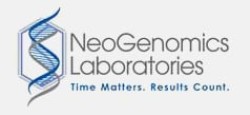 Abeona Therapeutics Inc (NASDAQ:ABEO) shares traded up 9.2% during mid-day trading on Friday . The company traded as high as $8.14 and last traded at $8.10. 657,079 shares were traded during mid-day trading, an increase of 65% from the average session volume of 399,426 shares. The stock had previously closed at $7.42.
Abeona Therapeutics Inc (NASDAQ:ABEO) shares traded up 9.2% during mid-day trading on Friday . The company traded as high as $8.14 and last traded at $8.10. 657,079 shares were traded during mid-day trading, an increase of 65% from the average session volume of 399,426 shares. The stock had previously closed at $7.42.
 Source: Flickr
Source: Flickr  Peter Krauth
Peter Krauth
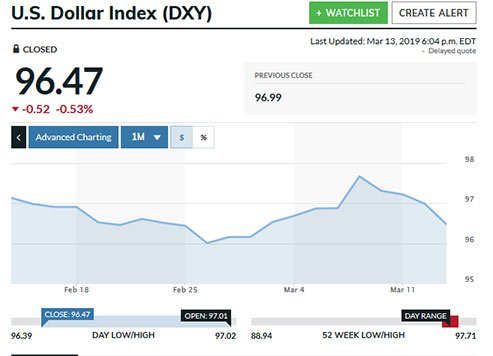
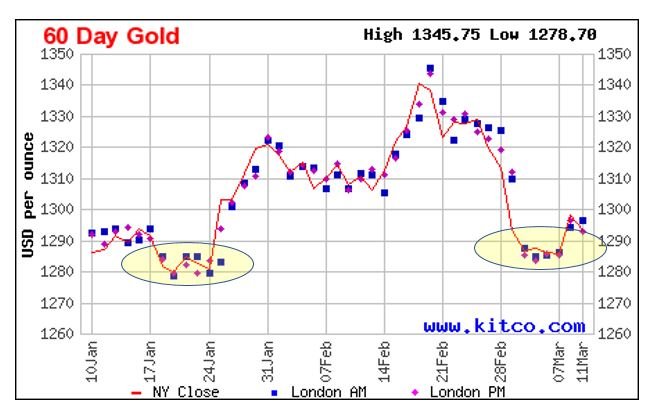
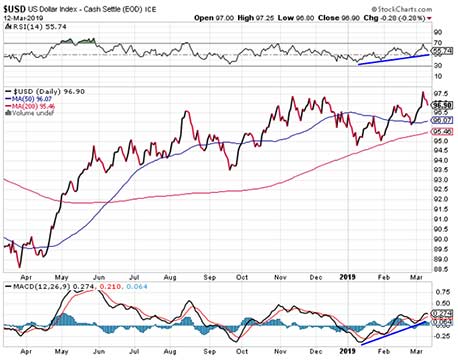
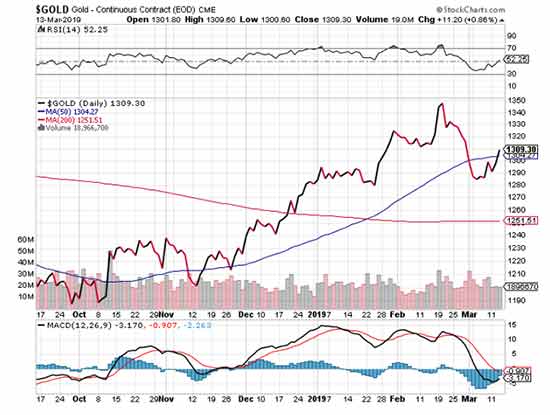
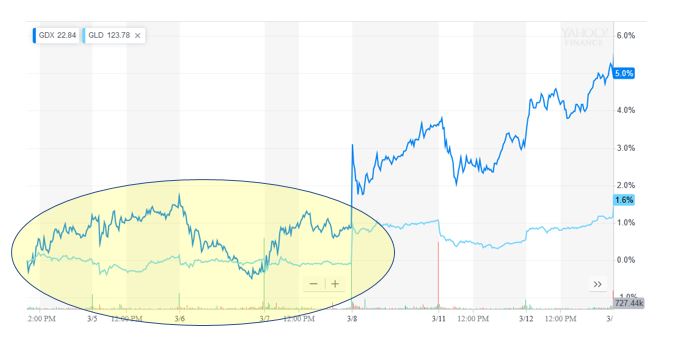

 Source: Paul Sableman via Flickr
Source: Paul Sableman via Flickr 
 Arcturus Therapeutics (NASDAQ:ARCT) was upgraded by Zacks Investment Research from a “sell” rating to a “hold” rating in a research note issued to investors on Thursday.
Arcturus Therapeutics (NASDAQ:ARCT) was upgraded by Zacks Investment Research from a “sell” rating to a “hold” rating in a research note issued to investors on Thursday.  City Holding (NASDAQ:CHCO) has earned an average rating of “Buy” from the six brokerages that are presently covering the company, MarketBeat.com reports. Four research analysts have rated the stock with a hold recommendation, one has assigned a buy recommendation and one has issued a strong buy recommendation on the company. The average twelve-month price objective among brokerages that have covered the stock in the last year is $80.00.
City Holding (NASDAQ:CHCO) has earned an average rating of “Buy” from the six brokerages that are presently covering the company, MarketBeat.com reports. Four research analysts have rated the stock with a hold recommendation, one has assigned a buy recommendation and one has issued a strong buy recommendation on the company. The average twelve-month price objective among brokerages that have covered the stock in the last year is $80.00. 
